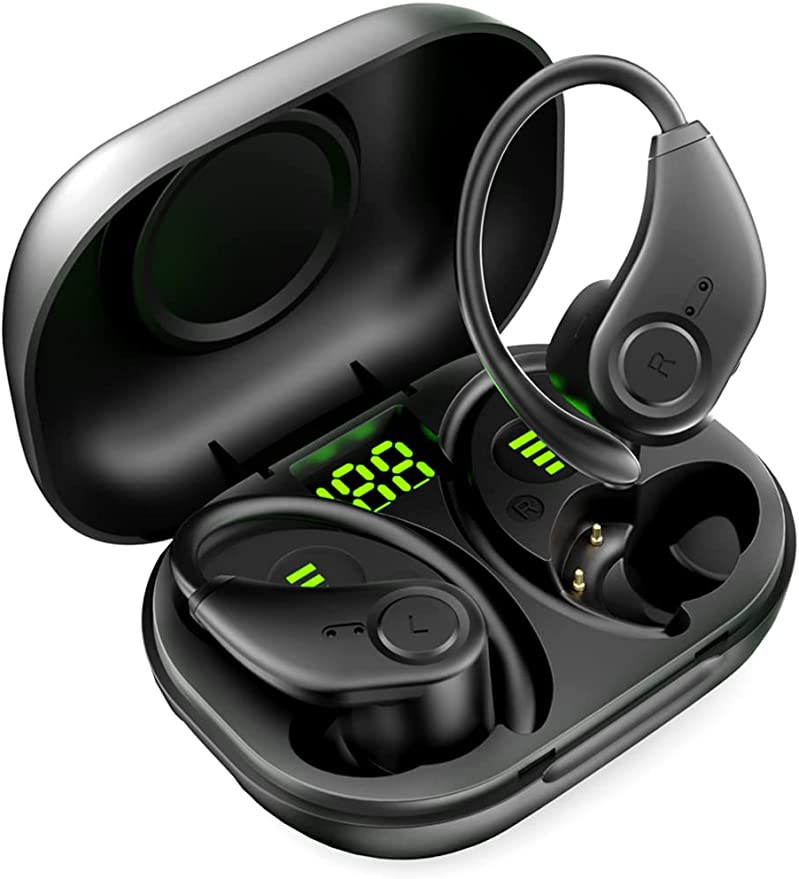KIDISLE CM9429D-UL Manual: The Ultimate Guide to Brewing, Cleaning & Troubleshooting
Update on Oct. 29, 2025, 3 p.m.
It’s a familiar ritual: place a mug under the spout, press a button, and in about 90 seconds, a fresh, hot cup of coffee is ready. That simple act is made possible by a remarkable piece of engineering, and in the case of the KIDISLE CM9429D-UL 3-in-1 Single Serve Coffee Maker, there’s more going on inside its compact frame than meets the eye.
While it’s celebrated for its versatility—brewing K-Cups, ground coffee, and tea—many users eventually find themselves searching for a manual, cleaning instructions, or troubleshooting tips. This guide is designed to be that definitive resource.
We’ll explore not just what to do, but why it works, helping you master your machine, maintain it for peak performance, and fix common issues.

1. Understanding the Core: The Science of a 90-Second Brew
Before we get to the instructions, understanding how your KIDISLE CM9429D-UL works is key to understanding its maintenance and quirks.
The Physics of Instant Gratification
How does a cold machine produce perfectly hot water almost instantly? The secret is its 1000-watt thermoblock.
Unlike old-fashioned drip machines that slowly heat a large reservoir, a thermoblock is a dense aluminum or steel block with a long, coiled channel running through it. When you press “BREW”:
1. The 1000-watt heater brings the metal block to an intense temperature in seconds.
2. A pump pulls cold water from the 40oz reservoir.
3. The water is forced through the serpentine, super-heated tunnel.
As it travels, it absorbs heat energy at an astonishing rate. This is a direct application of the first law of thermodynamics ($Q = mc\Delta T$), maximized for speed and efficiency. It’s also why the machine makes a low hum and gurgling sound—that’s the sound of rapid, on-demand thermal engineering at work.
The Chemistry of a Perfect Cup
Making coffee is a chemical extraction. The goal is to dissolve the best-tasting soluble compounds (like flavorful esters and ketones) from the grounds while leaving the bitter, astringent ones behind.
This is where the machine’s variable brew sizes (6, 8, 10, 12, or 14 oz) become scientifically relevant. You aren’t just choosing “more coffee”; you are directly manipulating the coffee-to-water ratio, which determines the final strength, or Total Dissolved Solids (TDS).
- A 6-ounce brew: Uses less water for the same amount of coffee (in a K-Cup or filter). This results in a higher concentration of dissolved solids (higher TDS) and a stronger, more intense cup.
- A 14-ounce brew: Uses more water to perform the same extraction. The resulting brew is more diluted (lower TDS) and tastes milder.
This control allows you to adjust the chemical extraction to your exact preference.
2. KIDISLE CM9429D-UL Instructions: Your First Brew (3-in-1)
This machine’s primary feature is its versatility. It comes with two adapters and a reusable filter. Here are the precise instructions for each.
Method 1: Brewing with a K-Cup Pod
- Preparation: Fill the 40oz removable water reservoir. Place your mug on the drip tray. (Note: You can remove the drip tray to fit a travel mug up to 7.2” tall).
- Insert Adapter: Place the K-Cup Pod Adapter (the one with the built-in puncture needle) into the machine’s brew chamber.
- Insert Pod: Place your chosen K-Cup pod into the adapter and press down firmly to snap the lid closed. This action punctures the pod at the top and bottom.
- Select Size: The ‘SIZE’ button will be illuminated. Press it to cycle through 6, 8, 10, 12, or 14 oz. The selected size will light up.
- Brew: Press the ‘BREW’ button. The machine will heat and brew, automatically shutting off when complete.
Method 2: Brewing Ground Coffee
- Insert Adapter: Place the Ground Coffee Adapter (the empty cup-shaped holder) into the brew chamber.
- Add Filter & Grounds: Place the included permanent mesh filter inside the adapter. Add your desired amount of ground coffee into the filter. Do not overfill past the “MAX” line.
- Close Lid: Close the machine’s main lid firmly until it snaps shut.
- Select Size & Brew: Use the ‘SIZE’ button to select your water volume and press ‘BREW’.
Pro-Tip: Using your own grounds turns your kitchen into a lab. A finer grind will increase the surface area, leading to a slower extraction and a stronger (and potentially more bitter) cup. A coarser grind will be weaker. Experiment to find your perfect setting.

Method 3: Brewing Loose-Leaf Tea
The process is identical to brewing ground coffee. The permanent mesh filter is perfectly suited for loose-leaf tea.
- Use the Ground Coffee Adapter and the permanent mesh filter.
- Add your loose-leaf tea.
- Select your brew size. A larger size (12 or 14 oz) is typically better for tea.
- Press ‘BREW’.
3. The Most Critical Task: Cleaning & Descaling Your KIDISLE
After months of use, you may notice your coffee isn’t as hot, the flow is slow, or the machine simply stops working. In 9 out of 10 cases, the culprit is limescale.
The “Silent War” Inside Your Machine
This is the final act of the coffee drama: the slow, inevitable battle against entropy. Your tap water contains dissolved minerals, primarily calcium ($Ca^{2+}$) and magnesium ($Mg^{2+}$) ions.
When the thermoblock heats this water, the minerals precipitate out and form calcium carbonate ($CaCO_3$)—a hard, chalky deposit known as limescale.
Limescale is the machine’s arthritis. * It clogs the narrow channels and nozzle. * It insulates the thermoblock, forcing the 1000-watt heater to work harder and less efficiently. * Eventually, it can block the flow of water entirely.
This is where the self-cleaning function becomes your most important tool.

How to Use the KIDISLE Self-Cleaning Function
This is a chemical counter-offensive. You will need a descaling solution (either store-bought or a 50/50 mix of white vinegar and water, or a citric acid solution).
- Empty the Machine: Remove any K-Cup or coffee adapter.
- Fill Reservoir: Fill the water reservoir with your descaling solution. Place a large mug or bowl under the spout.
- Activate Clean Mode: Press and hold the ‘SIZE’ and ‘BREW’ buttons simultaneously for 3 seconds.
- Let it Run: The machine will now automatically run a cleaning cycle, pumping the solution through the thermoblock and internal tubing to dissolve the limescale.
- Rinse (Crucial!): After the cycle is complete, discard the solution. Thoroughly rinse the water reservoir. Fill it with fresh, clean water and run 2-3 full brewing cycles (at 14 oz) to flush any remaining solution from the system.
The Chemistry of Descaling: The descaling solution is a mild acid. It reacts with the alkaline limescale in a classic acid-base neutralization, breaking the solid scale down into water-soluble compounds and CO₂ gas, which are then flushed away.
2 C₆H₈O₇ (citric acid) + 3 CaCO₃ (limescale) → Ca₃(C₆H₅O₇)₂ (calcium citrate) + 3 H₂O (water) + 3 CO₂ (gas)
Cleaning Cycle Reminder
Your KIDISLE CM9429D-UL is engineered to help you. After 300 brew cycles, the ‘CLEAN’ light will begin to flash, reminding you that it’s time to descale. Following this reminder is the single best way to extend the life of your machine.
Unclogging with the Dredge Needle
If your machine is severely clogged (e.g., water won’t come out), it may be a physical blockage in the nozzle. Your machine likely came with a small dredge needle (a small cleaning tool).
- Unplug the machine and let it cool.
- Remove the K-Cup adapter.
- Carefully insert the dredge needle up into the water outlet pin (the sharp needle that punctures the top of the K-Cup).
- Gently move it back and forth to clear any trapped coffee grounds or debris.
- Also, clean the needle on the adapter itself.
- After clearing, run a self-clean cycle.
4. KIDISLE Coffee Maker Troubleshooting
Based on common user reports, here are solutions to the most frequent issues.
-
Problem: The buttons are not responding, or the ‘SIZE’ button is flashing.
- Cause: This is almost always a safety feature. The main lid is not securely closed.
- Solution: Open the lid and close it again firmly, pressing down until you hear a distinct “click” or “snap.” The buttons will not respond unless the lid is properly latched. Ensure your hands are dry, as the buttons are touch-sensitive.
-
Problem: The machine is making a loud noise (humming or gurgling).
- Cause: This is normal. The sound is the water pump pulling water from the reservoir and the thermoblock flash-heating it. It is not a sign of a defect.
- Solution: No action needed.
-
Problem: The machine stopped working completely.
- Cause: This is most likely a severe limescale blockage or an electrical issue.
- Solution: First, try to run the self-cleaning function. If the machine is so clogged that it won’t even pump water for the clean cycle, unplug it, let it sit for an hour, and try again. If it still fails, use the dredge needle to clear the nozzle. If it still doesn’t power on, check your outlet and contact support.
-
Problem: The coffee tastes weak or watery.
- Cause 1 (User Error): You are using a large brew size (14 oz) with a standard K-Cup, which dilutes the extraction (low TDS).
- Cause 2 (Maintenance): Your machine is clogged with limescale, preventing the water from reaching the optimal brewing temperature.
- Solution: First, try a smaller brew size (e.g., 6 or 8 oz). If it’s still weak and not hot, run a self-cleaning cycle.
5. The Bones of the Machine: Materials and Design
The machine’s design is a story of materials science and engineering trade-offs.
The gleaming white (or red) shell is made of Acrylonitrile Butadiene Styrene (ABS). This common thermoplastic is chosen for its strength, impact resistance, and glossy finish.

More importantly, the internal parts that contact hot water (like the tubing and the reusable filter basket) are made from Polypropylene (PP). This polymer has a high melting point and is chemically inert, meaning it won’t leach flavors or chemicals into your water. It is also BPA-free, a key consideration for health-conscious users.
The machine’s remarkable narrowness—just 4.93 inches—is a triumph of “function density.” The compact thermoblock, miniaturized pump, and smart internal layout are what allow it to fit on any countertop.
So the next time you use your KIDISLE CM9429D-UL, you’ll know it’s more than just a simple box. It’s a thermodynamic engine, a chemical lab, and a battlefield against limescale. By understanding its instructions, mastering its cleaning functions, and knowing how to troubleshoot its quirks, you can ensure it continues to deliver that perfect 90-second miracle for years to come.







































